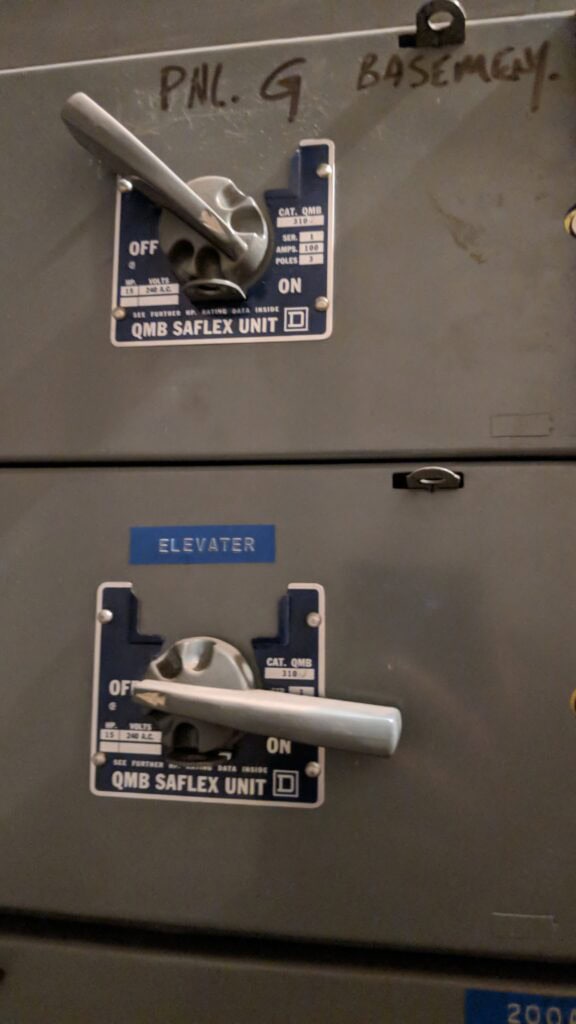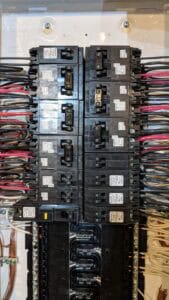Every home or building relies on a carefully designed electrical distribution system to deliver power safely and efficiently. At the heart of this system are distribution boards — the panels that direct electricity from your main supply to every circuit in your home. Understanding the different types of distribution boards used in Calgary can help you make informed decisions when upgrading, expanding, or troubleshooting your electrical system.
What Is a Distribution Board?
A distribution board (also called an electrical panel or breaker box) is the central hub that controls the flow of electricity throughout your property. Power enters from the electrical service line, passes through the main breaker, and is then distributed to various branch circuits that power your lights, appliances, and outlets. Each circuit is protected by a breaker or fuse to prevent overloads and ensure safety.
In modern Calgary homes, distribution boards are designed to meet the Canadian Electrical Code (CEC) and are rated according to the home’s total electrical demand — most commonly 100-amp or 200-amp systems. As homes add more technology and higher-power appliances such as EV chargers, hot tubs, or heat pumps, upgrading these panels becomes essential for both safety and performance.
Main Types of Distribution Boards
1. Fuse Boxes (Outdated)
Fuse boxes were common in older Calgary homes built before the 1970s. They contain replaceable fuses that burn out when overloaded, cutting power to protect the circuit. While effective for their time, fuse boxes lack the safety and convenience of modern breaker panels. If your home still uses fuses, it’s strongly recommended to schedule an electrical panel upgrade to meet today’s standards and insurance requirements.
2. Main Breaker Panels
The most common type of distribution board today is the main breaker panel. This panel contains a large switch — the main breaker — that can shut off power to the entire home at once. It also houses individual breakers for each circuit, which automatically trip in the event of an overload or short circuit. Main breaker panels provide easy access and are designed for compatibility with modern 200-amp service upgrades.
3. Lug Panels
A lug panel does not include a main breaker but instead relies on an upstream breaker for protection. These panels are typically used as secondary or sub-panels in larger homes or detached structures, such as garages or workshops. The line wires pass through the lug panel to distribute power downstream safely.
4. Sub-Panels
Sub-panels are smaller distribution boards connected to the main panel, allowing power to be distributed to specific areas — such as a basement suite, garage, or addition. They are ideal when your main panel has reached capacity or when you need to isolate circuits for a particular part of the property. While sub-panels offer convenience, they don’t include a main disconnect, so professional installation and proper load calculations are critical.
5. Transfer Switches
Transfer switches are used to safely connect backup generators or alternate power sources to your home’s electrical system. They allow you to switch between utility power and generator power without risk of backfeeding the grid. There are two main types:
- Manual Transfer Switches – Require the homeowner to switch power manually during an outage.
- Automatic Transfer Switches – Detect outages and switch power automatically for seamless operation, commonly used with standby generators and solar battery systems.
These switches are a key part of solar and backup power setups, ensuring consistent and safe energy flow during outages.
Why Proper Distribution Boards Matter
Your distribution board isn’t just another piece of hardware — it’s the foundation of your home’s electrical safety. Modern boards include features like GFCI protection and AFCI breakers to prevent fires, shocks, and equipment damage. An overloaded or outdated panel can trip frequently, limit your ability to add appliances, and pose a fire risk if not addressed promptly.
Upgrading Your Electrical Distribution Board in Calgary
If your Calgary home still uses a fuse box or has a panel that’s more than 25 years old, it’s time to consider an upgrade. A new electrical panel will provide better circuit protection, room for future expansion, and improved efficiency. It also ensures compliance with the Canadian Electrical Code and Alberta inspection requirements.
Panel Upgrade Experts specializes in electrical service upgrades, panel replacements, and safe, code-compliant installations across Calgary. Whether you’re expanding your home, adding solar power, or installing an EV charger, our certified electricians ensure your distribution system is built for the future.
Call 587-800-9788 today or use our contact form to book your free consultation and get expert advice on upgrading your home’s electrical system.




